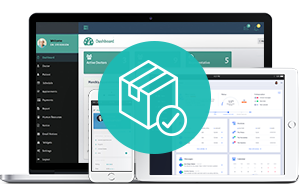Prototype vs. MVP: What’s the Difference?

Editor’s note: Tanya explains the difference between a prototype and an MVP (minimum viable product) and outlines their advantages. If you need professional help creating a successful MVP or prototype, reach out to ScienceSoft for IT consulting services. Our seasoned consultants have years of product development experience and are ready to guide you through every step of the process.
What Is a Prototype?
A prototype is typically the earliest software model that showcases how the future app would work. It is a simple visual representation of your idea that helps you get feedback from the project stakeholders or end users and identify the areas for improvement.
Prototypes are created with varying levels of fidelity. Low-fidelity prototypes can be as simple as hand-drawn sketches or paper wireframes, while high-fidelity prototypes are clickable and let you experience the look and feel of the key software features. The most complex hi-fi prototypes may even utilize early code.
Key Prototyping Benefits
- Low cost. Prototypes are typically cheaper to build because they don’t require much development time and can have fewer features and lower fidelity.
- Fast feedback. Prototypes can be built and tested very quickly, which allows designers and developers to get feedback and identify product flaws early in the project.
- Easy to adjust. Since prototypes tend to be simple and flexible, they are easy to adjust in response to user feedback or changing market conditions to test out new ideas or compare a few options side by side.
- Low risk. Prototypes are low-risk, both financially and in terms of development time. This makes them a great option for startups and small businesses looking to test new product concepts and different designs before fueling resources into full-scale development.
- Fundraising opportunity. Prototypes provide a tangible representation of an idea that can be used to attract investors or partners.
What Is an MVP?
An MVP (or a minimum viable product) is a simplified version of the future product – basically, the bare-bones software build with just enough functionality to satisfy the first users. MVPs are developed primarily to live-test the product with a broader audience and start getting early payback. If your MVP successfully enters the market, you can slowly evolve into a full-featured app by adding new functionality every few weeks.
The main difference between a prototype and an MVP is that the latter is a market-ready app. While it may lack some features or be less polished than the final product, it is still a functioning application. A prototype is just a model for the future app.
Key MVP Benefits
- Concept validation. MVPs provide a realistic representation of the final product, allowing developers and designers to validate their ideas or assumptions and gain practical insights that prototypes may not be able to provide.
- Real user feedback. While you can show a prototype to a narrow circle of project stakeholders or investors, an MVP opens the gates to thousands of unbiased users that will test it in real-world scenarios. With an MVP, you can gather essential feedback that will help identify the most requested features, the biggest user pain points, or the least intuitive UI elements. This feedback can be used to prioritize development efforts and make necessary adjustments before the full launch.
- User acquisition. MVPs can be used to attract early adopters and create buzz about the product. This can help build a loyal user base early on and generate interest in the product before it fully enters the market.
- Revenue. By releasing an MVP, you can start getting payback earlier, lowering the project risks and providing a new income stream to finish the development.
Which Do You Need: a Prototype or an MVP?
The choice between a prototype and an MVP depends mainly on where you are in the software development lifecycle, how well you know your users, and how many resources you have on hand. If you are still refining your idea and testing early design concepts, choose a prototype: you’ll get stakeholder feedback, attract investors, and then proceed with MVP development. If you are confident in your idea and have the skills and budget to kick off full-scale software development, an MVP is the right place to start.
Take the First Step to a Successful and Profitable Product
Both prototyping and MVP development are useful practices that boost the chances of project success, but they serve different purposes. If you need professional advice or technological expertise to streamline the early stages of your project’s growth, don’t hesitate to reach out to ScienceSoft.

Software Product Development
Got a great idea for a product? Our experienced software development teams are ready to help you put it into life!



